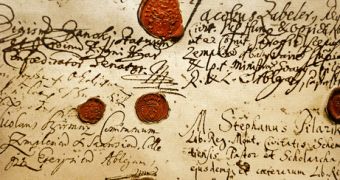Manuscripts are documents written by hand. Before the printing process was invented (not to mention typing machines or computers), this was the only way to share facts or ideas at long distance or for lasting purposes. Ancient manuscripts are invaluable scientific tools that provide very important data on a wide range of aspects, while they also stand as historic proof and have a somewhat sentimental impact on modern viewers.
For many centuries, finding proper ways to preserve them in a good condition has been regarded as a matter difficult to tackle. Alternative solutions involved scanning them in order to provide 3D or digital versions of their content, but that's just not the same. The original manuscript still gets even older and is eventually more affected by the passing time, dust, atmospheric and storage conditions, mold and many other factors.
In the restoration process, even the identification of the manuscript's state normally causes a significant amount of damage, as chemical tests are performed to indicate the required paper restoration approach. The damage done can sometimes scale up to half of a page, not to mention the amount of time the process requires. But this worrisome situation has recently come to an end.
Fortunately, restoration expert Jan Wouters, Head of Laboratory at the Royal Institute for Cultural Heritage in Brussels, Belgium and visiting scientist at the Getty Conservation Institute in Los Angeles, California, announced that a newly-developed portable scanning device is able to perform all those measurements within a second, without risking the integrity of manuscripts. By shining light on the paper, it analyzes the absorbed wavelengths, yielding details related to fragility factors like cellulose molecules' length or acidity. This type of devices will certainly prove to be an essential tool for libraries all over the world which hold such texts.

 14 DAY TRIAL //
14 DAY TRIAL //